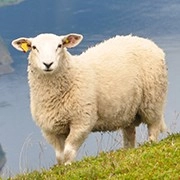Happy Bluebird
A beautiful blue magpie bird with beautiful blue-purple feathers, a beautiful ribbon tail, graceful and graceful posture, and a melodious call. When you first see the red-billed blue magpie, you will be fascinated and shocked by its appearance.
Its morphological characteristics.
The blue magpie is a beautiful bird with similar plumage in males and females.
Forehead, top to back of neck, side of head, side of neck, chin, throat and upper chest are all black with white, blue-white or purple-grey feathers on neck from top to back, with increasing spots from top to back more.
The central tail feathers are blue-grey with white terminal spots, the rest of the tail feathers are purplish-blue or blue-grey with white terminal spots and black subterminal spots.
The blue magpie is larger, with a body length of about 51-65.5 cm and a weight of about 147-210 grams. The magpie's iris is orange-red, and its beak and feet are red.
Worldwide distribution.
Distributed in Bangladesh, Cambodia, India, Myanmar, Nepal, Thailand, Vietnam.
Habitat.
It mainly inhabits various forests such as mountain evergreen broad-leaved forest, coniferous forest, mixed coniferous and broad-leaved forest, and secondary forest. The altitude ranges from the plains and low hills at the foot of the mountain to the plateau mountains at an altitude of about 3500 meters.
Living habits.
Group behavior.
They usually come in pairs or in small groups, with a group of roughly 3 to 10 members.
Food.
They eat mainly insects and other animal foods, but also crops such as plant fruits, corn, and wheat. Common animal food groups include beetles, beetles, locusts, grasshoppers, flies, and other insects.
Breed.
The breeding season of the red-billed blue magpie is from March to May every year. During this period, the mother bird has a very strong ability to protect the nest and has a very fierce temperament.
Nest.
Blue magpies will build their nests on tall branches, and some dead branches, hay, fibrous roots, moss, etc. are the main materials for their nesting.
Friends who like photography can go and shoot it and use the lens to keep its appearance.

 · Animal Team
· Animal Team